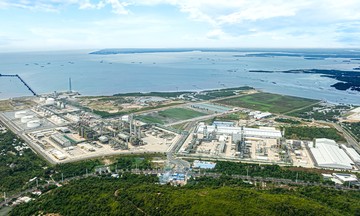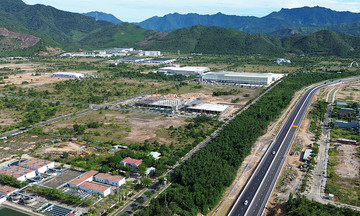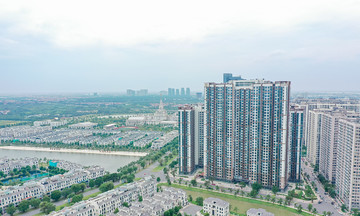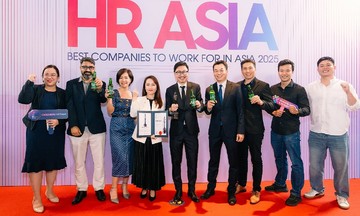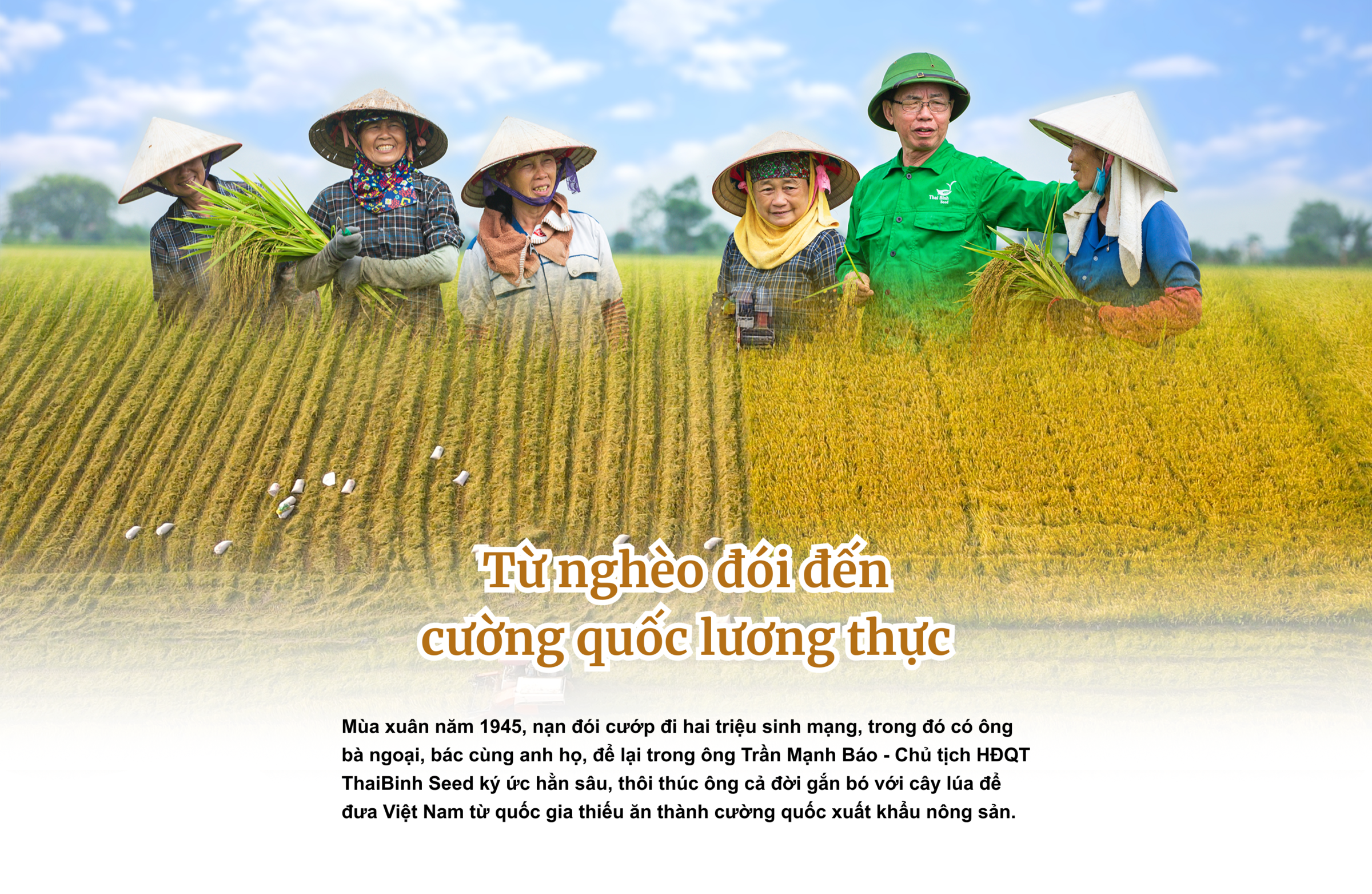 |
Viet Minh forces assist in raiding Japanese rice stores. Photo: Archive |
 |
Tran Manh Bao, Chairman of ThaiBinh Seed, at the company's crop research institute, 2018. Photo: ThaiBinh Seed |
In early 1945, the Japanese and French colonial regimes' policies of seizing rice and forcing farmers to replace rice paddies with jute fields devastated Thai Binh, the rice bowl of northern Vietnam and the birthplace of Tran Manh Bao. "In a land of rice, people were forced to uproot their crops for jute," Bao, chairman of ThaiBinh Seed, recalled.
Coupled with natural disasters, including crop failures and dike breaches in the Red River Delta, millions of Vietnam's 20 million people faced starvation. Thai Binh was among the hardest hit, with 280,000 deaths, a quarter of its population. Bao's maternal family lost four members in a single week; his uncle and cousin were buried in the same coffin due to a shortage of burial plots.
In 3/1945, a movement to raid Japanese rice stores and distribute the grain began to spread, facilitating rice transport from south to north. Dikes were reinforced, and agricultural production was reorganized. Less than a decade later, however, errors in land reform led to another famine in 1954, affecting around half a million people. For the first time, Vietnam received 10,000 tons of rice aid from China.
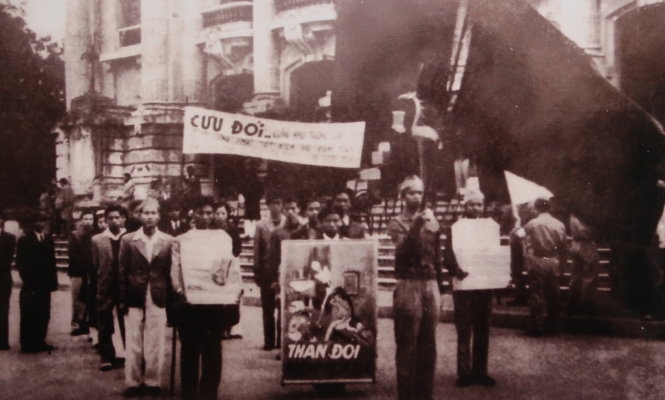 |
Farmers harvesting durian, Tien Giang (former), 11/2023. Photo: Hoang Nam |
Viet Minh forces assist in raiding Japanese rice stores. Photo: Archive
In 1956, the Government Council issued a resolution to rectify the errors of land reform, restoring freedom, citizenship, social class status, and compensating those wrongly accused. These corrective measures, coupled with increased production efforts, gradually revived the economy. North Vietnam's rice yields led Southeast Asia from 1957-1958, but later declined due to the collectivization model.
Under this system, the collective economy was prioritized, while the private economy was suppressed. Emulation movements spread with slogans like "Three Firsts Flag" in the military, "Duyen Hai Wave" in industry, and "Dai Phong Wind" in agriculture. After reunification, the cooperative model expanded nationwide, from 55 units in 1955 to 73,500 in 1986, but the economy regressed.
The Central Committee's Fourth Congress document described 1980, the end of the five-year plan (1976-1980), as a period of "severe economic hardship and living conditions." Food production reached only 13.7 million tons, 1.3 million tons short of the plan. The collective pig herd decreased by 16%, and marine fish production fell by 12,000 tons. To ensure food security, the state mobilized 5.8 million tons of rice but had to import a nearly equivalent amount (5.62 million tons) and release 38,000 tons from reserves. Over five years, over one million people became unemployed.
 |
Tran Manh Bao, Chairman of ThaiBinh Seed, visits farmers in the experimental planting area of the Crop Research Institute, 2023. Photo: ThaiBinh Seed |
By 1986, the start of Doi Moi (economic reforms), the number of cooperatives had increased 1,336-fold in 30 years, but operational inefficiencies were evident. Work was measured by hours, not output, and collective assets were neglected. Skilled and unskilled pig farmers, high- and low-yielding rice growers, were all treated equally, leading to inflated work hours and points, creating a new class of local elites. Farmers lost motivation to work their own land.
"At that time, Vietnam stood on the brink of collapse, yet also at the height of aspiration," remarked Dr. Dang Kim Son, former director of the Institute of Policy and Strategy for Agriculture and Rural Development (IPSARD).
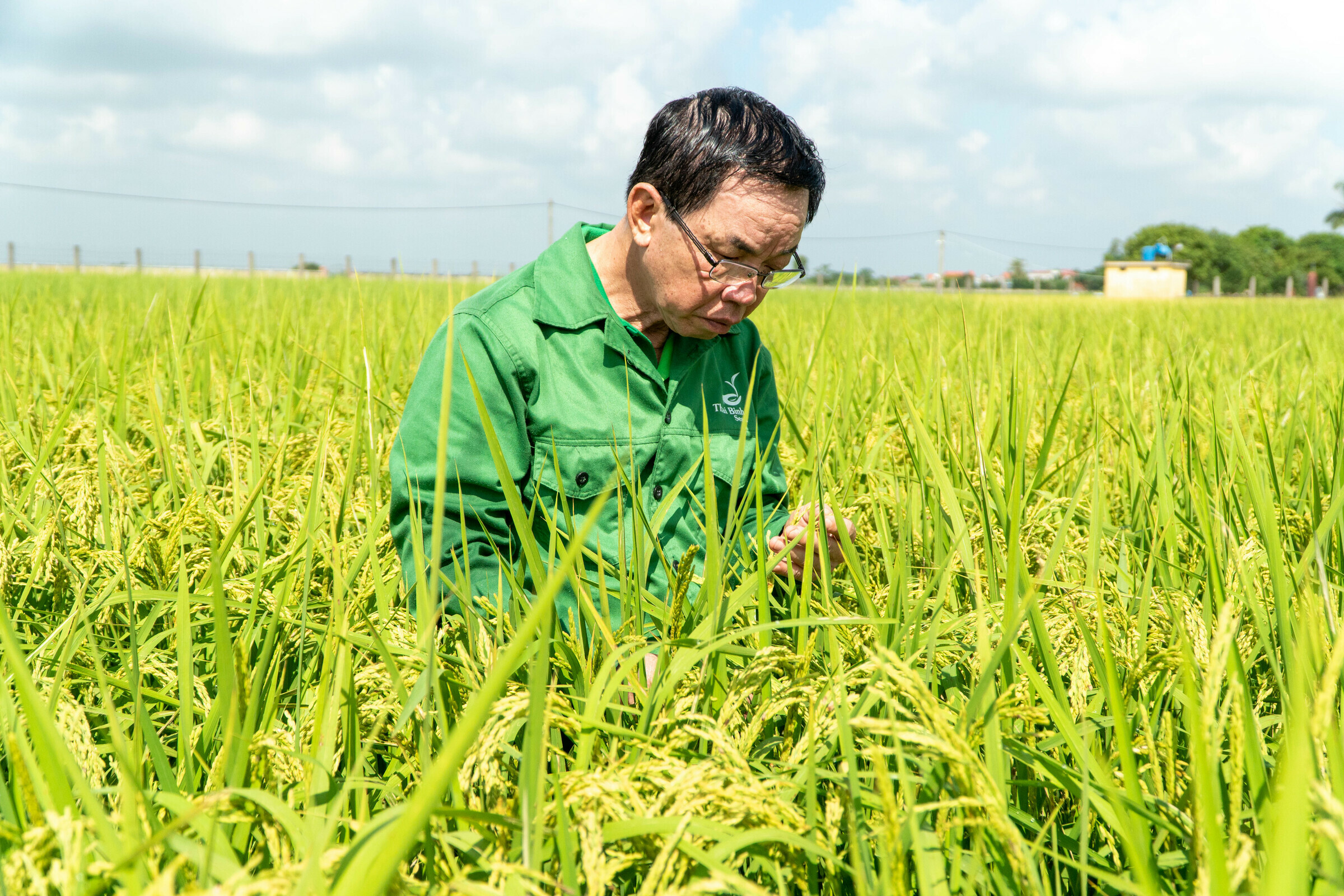 |
Rice fields in the Mekong Delta, 4/2024. Photo: Tran Thanh |
Tran Manh Bao, Chairman of ThaiBinh Seed, at the company's crop research institute, 2018. Photo: ThaiBinh Seed
Amidst this, some individuals sought innovative solutions. Around 1966-1967, Kim Ngoc, the late secretary of Vinh Phuc Provincial Party Committee, pioneered the "household contract" system (khoan ho). This system allocated land to farmers for independent production, replacing collective farm work. They also retained any surplus after fulfilling quotas.
However, this policy was deemed contrary to the central government's collectivization policy and was halted in 1968. Ngoc was forced into self-criticism.
Vinh Phuc wasn't alone in its struggles. Over 100 miles away in Thai Binh, two decades later, Bao, then deputy head of Dong Co rice seed farm (ThaiBinh Seed's predecessor), witnessed the farm's 56 hectares yield less than 60 tons of rice, barely over 1 ton per hectare, in a region once known as the "home of 5 tons."
"One bag of fertilizer counted as one workday, transporting 4 bags to the pumping station counted as 4 workdays. How could rice thrive without fieldwork?" Bao recalled.
Driven by the belief that productivity hinges on workers benefiting from their labor, Bao developed a new rice production process. After three years of research, in late 1987, he presented the "Final Product Contract to Workers" proposal to provincial leaders, similar to Ngoc's "household contract" system. Fearing disciplinary action, many expressed concern, but Bao persisted.
"Some warned of imprisonment, but as a soldier returning from war, my possessions were a few old clothes. At worst, they'd reassign me. This was the necessary path; inaction would be a disservice to the people," he said.
Bao's determination convinced Thai Binh Provincial Party Secretary Chu Van Ry, who cautioned, "This contradicts current policy; we risk discipline, but it must be done."
Within a year, Dong Co farm's rice seed production soared to 600 tons, a tenfold increase. Coinciding with the Sixth National Congress (1986) initiating Doi Moi, Resolution 10 (Khoan 10) was issued in 4/1988, recognizing farmer households as autonomous economic units and allocating land to cultivators. Dong Co farm became a model for Thai Binh and the nation.
Previously, Directive 100 (1981) had only contracted to production teams (comprising multiple households) through a sharecropping system. Households received fertilizer, pesticides, rice seeds, and paid taxes during harvest.
Khoan 10 recognized individual and private economies. Farmers gained autonomy, profiting from their land, with free market access and expansion. Within a year, Vietnam transformed from exchanging gold for 200 tons of emergency food aid (1988) to having surplus rice for export.
According to Do Ha Nam, chairman of the Vietnam Food Association (VFA), before 1986, Vietnam annually imported over 1.5 million tons of rice for food security. Khoan 10 reversed this, making Vietnam a rice exporter, ending the era of food shortages.
Initially, exports were primarily low-grade, unbranded rice. Drying and storage systems were outdated, leading to high losses. Quota and centralized contract mechanisms limited business flexibility and subjected them to price pressures.
Khoan 10 revitalized the rice sector, paving the way for fruit, vegetable, livestock, and aquaculture growth. Even coffee, then nascent, began its global journey. The first coffee exports to the Soviet Union and Eastern Europe in 1981 through barter trade laid the foundation for the Vietnamese coffee industry.
Dang Phuc Nguyen, general secretary of the Vietnam Fruit and Vegetable Association (Vinafruit), recalled his early days in 1983, exporting produce to the Soviet Union. No one envisioned food exports then. Khoan 10 changed everything. In 1992, the first Vietnamese dragon fruit exports to Taiwan marked a new era, from a few tons to thousands of containers annually.
"We started with small cooperatives, workshops with a few hundred people. Now we have large enterprises, modern factories, and global supply chains," Nguyen stated, attributing the success to the state empowering farmers and encouraging business investment.
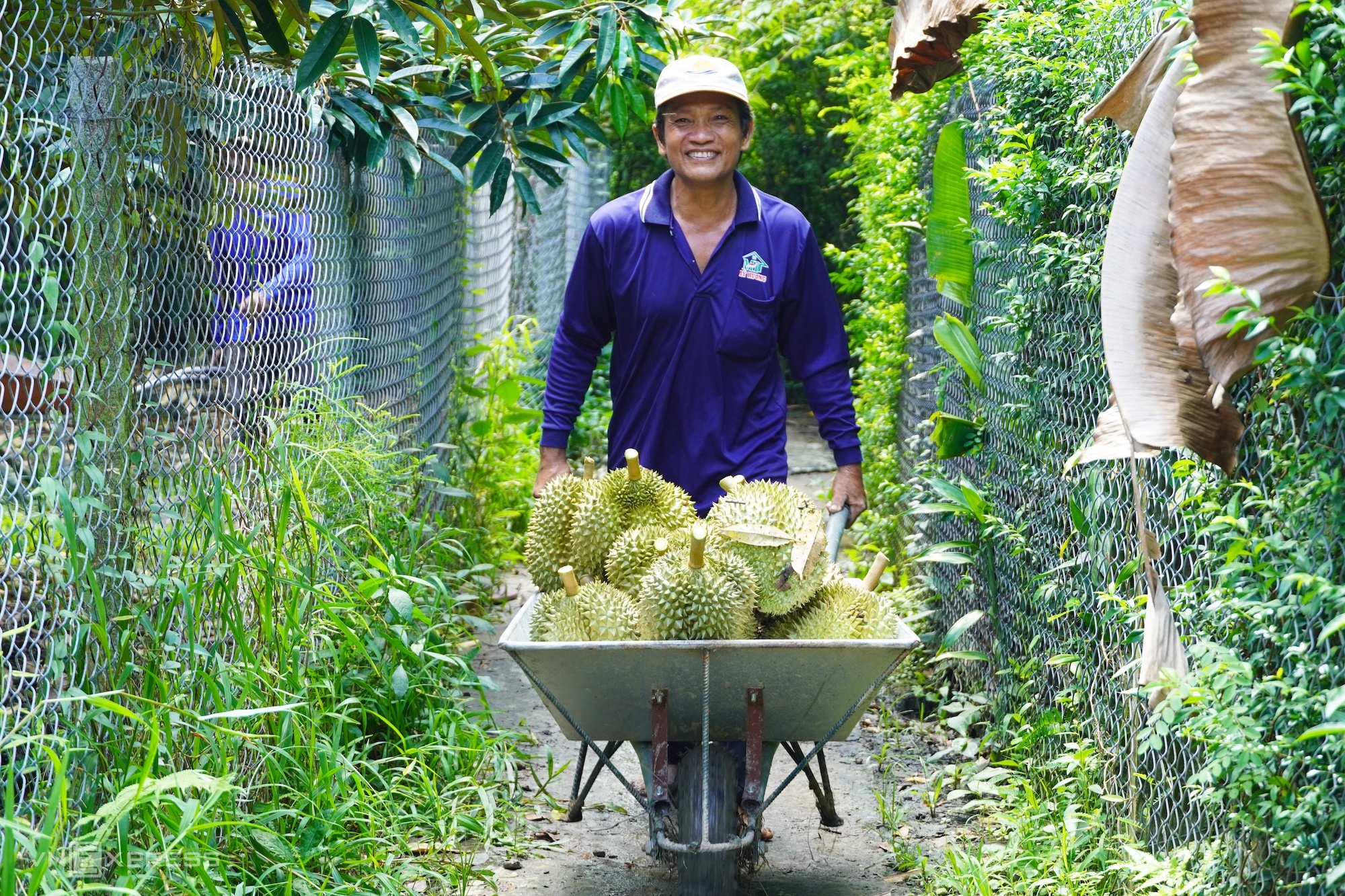 |
Farmers harvesting durian, Tien Giang (former), 11/2023. Photo: Hoang Nam
 |
Building on Khoan 10, rice production expanded but faced fragmented land ownership. To address this, the "large-scale rice field" model was promoted from 2010, consolidating land and implementing new varieties and mechanization.
The agricultural sector entered a second transformation phase, focusing on quality and technology. Former Deputy Minister of Agriculture and Rural Development Bui Ba Bong, chairman of the Vietnam Rice Industry Association, considers science and technology, particularly variety selection, as key drivers. The sector has developed high-quality rice varieties, raising national average yields to over 6 tons per hectare, double that of Thailand and India.
This increased yields by 15-30% compared to traditional farming, according to the Ministry of Agriculture and Rural Development (now the Ministry of Agriculture and Environment).
Bao believes seed development should be prioritized, as it determines farming practices, influences quality and yield, and facilitates climate change adaptation. For instance, ThaiBinh Seed's TBR97 variety has a growth period of only 95-100 days, tolerates flooding, and suits the north-central region. The A Sao sticky rice variety, restored from a rare Tran dynasty variety, is pest-resistant and produces delicious, glutinous rice. ThaiBinh Seed has successfully developed and received national recognition for around 30 crop varieties.
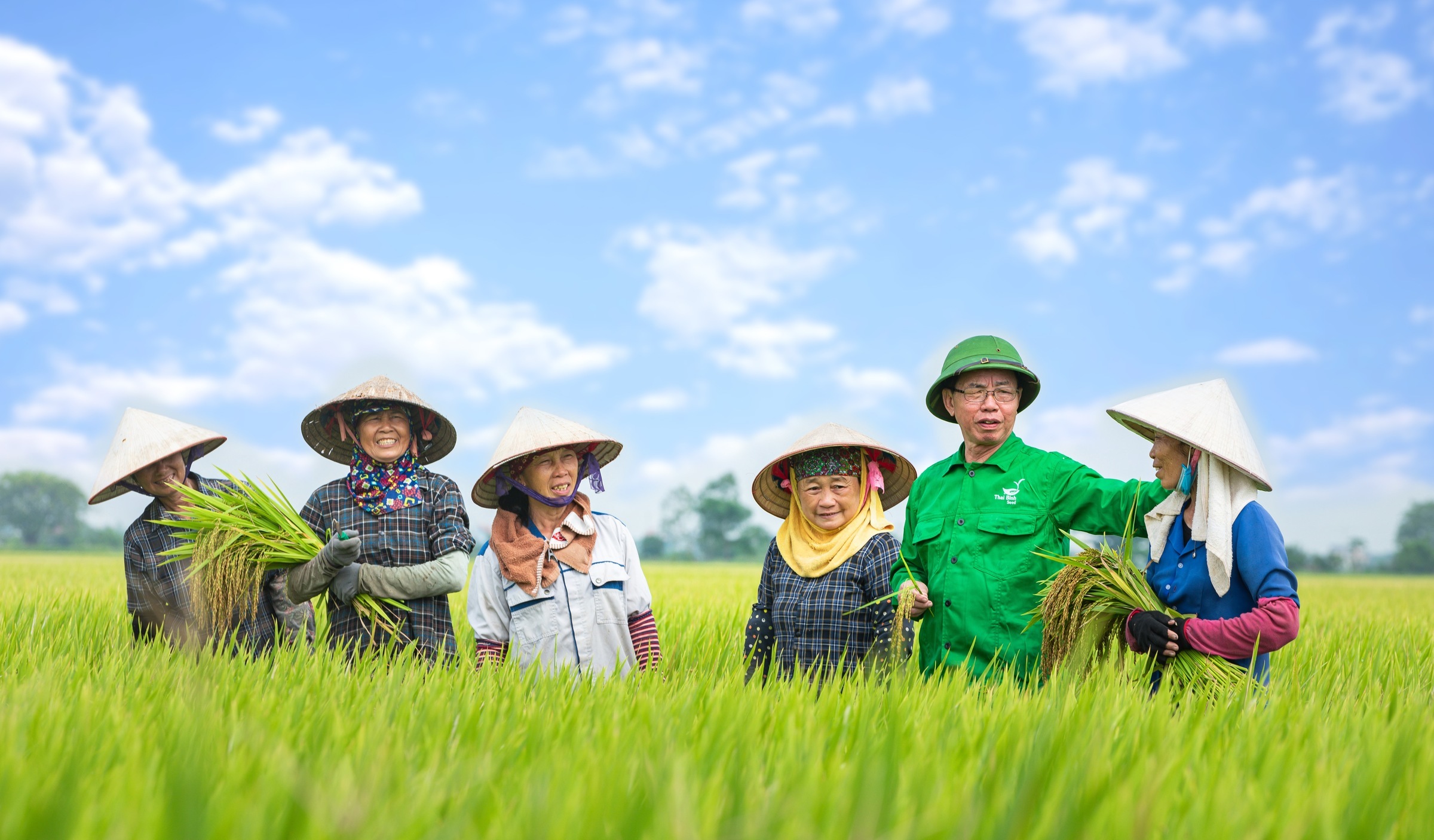 |
Tran Manh Bao, Chairman of ThaiBinh Seed, visits farmers in the experimental planting area of the Crop Research Institute, 2023. Photo: ThaiBinh Seed
According to the General Statistics Office (GSO), the proportion of high-quality rice increased from 50% in 2015 to 74% in 2020, resulting in over 85% of rice exports belonging to the premium segment. In 2019, the ST25 variety, developed by engineers Ho Quang Cua, Tran Tan Phuong, and Nguyen Thi Thu Huong, was awarded "World's Best Rice," shifting the strategy from cheap white rice to fragrant, specialty, and organic rice.
"Vietnamese rice has shed its low-price image, asserting its competitive position through quality and branding globally," Bong stated.
This success spread rapidly. Truong Van Hung, director of Hung Loi Agricultural Cooperative (former Soc Trang), reported that all 522 members have transitioned to high-quality rice varieties like ST25. "Yields aren't exceptionally high, but the selling price is excellent, so farmers profit," he said.
Currently, ST25 rice sells for around 8,750 VND per kg at the farm gate, 40-50% higher than regular varieties. Farmers earn 40-50 million VND per hectare on average. Some seasons, prices reach 12,000 VND per kg, yielding profits of 70-80 million VND per hectare.
In 2023, Vietnamese rice led global prices, surpassing competitors like Thailand and India. Rice exports hit a record 9 million tons, generating 5.7 billion USD, the highest ever.
Rice's success propelled other agricultural products. In 2024, durian exports exceeded 3 billion USD for the first time, and coffee maintained its second global position. Cashews, pepper, and fresh fruit joined the "billion-dollar export club."
 |
Vietnam is implementing a one-million-hectare low-emission, high-quality rice project in the Mekong Delta, which provides over 90% of rice exports. Bong considers this a repositioning of Vietnamese rice globally, capitalizing on a "peak opportunity."
The program aims to reduce costs by 10%, increase profits by 20%, and cut CO2 emissions by 10 million tons annually. In June, a 500-ton shipment of Japonica rice labeled "Green Vietnamese Rice, Low Emission" exported to Japan for 820 USD per ton signaled positive progress.
Bong believes Vietnamese rice is entering an era of "green prosperity," with smart farming, clean, high-quality rice, increasing incomes, and fostering a circular economy.
In the Mekong Delta, Hung's cooperative has adopted this approach on 50 hectares. Each hectare requires only 60-70 kg of seeds instead of 100 kg, reducing costs while maintaining yields. Rice grown under this model fetches 700 VND more per kg, with guaranteed purchase by businesses.
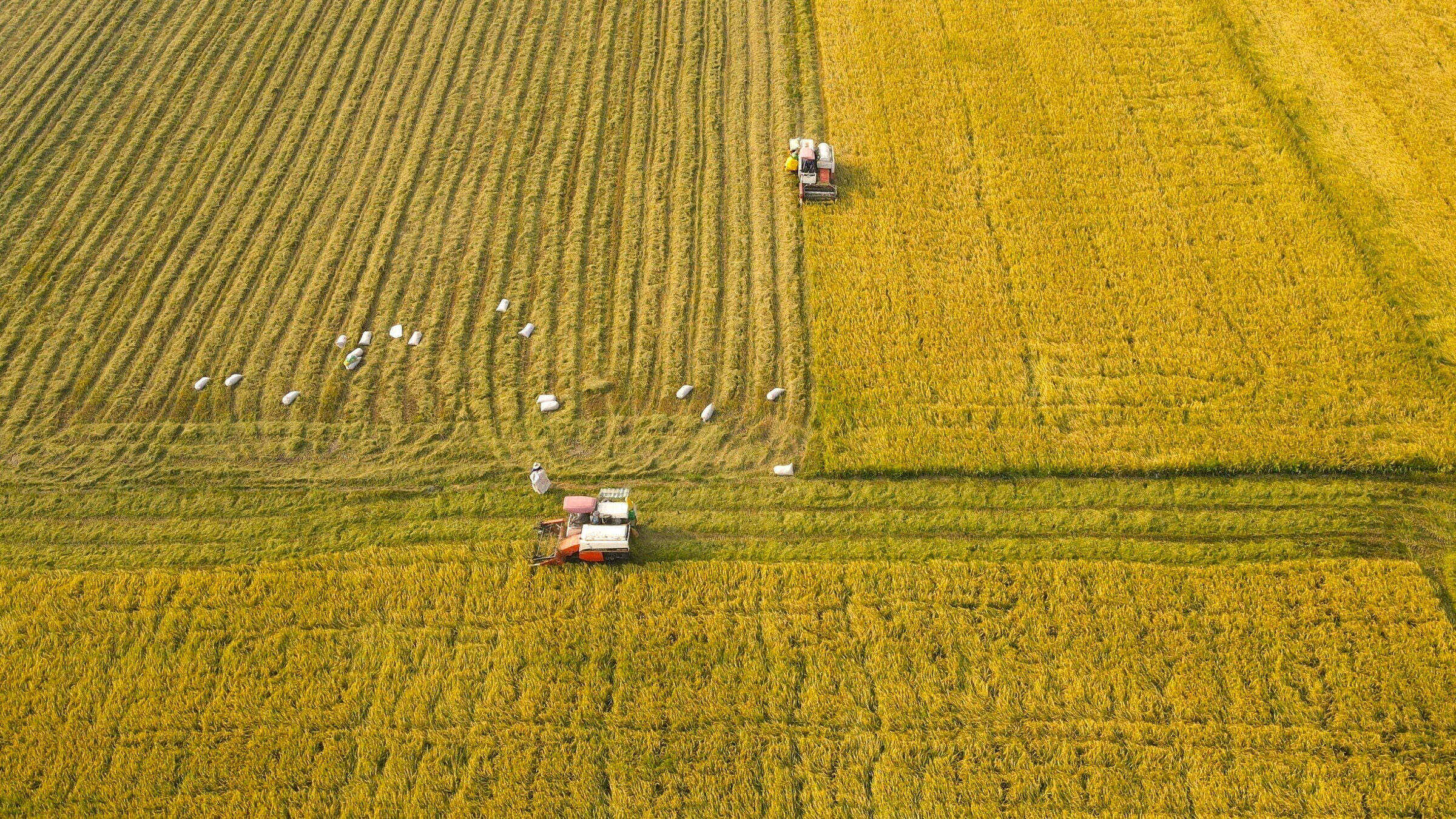 |
Rice fields in the Mekong Delta, 4/2024. Photo: Tran Thanh
Challenges remain. Bao acknowledges the need for technology adoption, new rice varieties, and developing a "new" class of farmers. "These new farmers need to understand laws, grasp market dynamics, and recognize their participation in the global value chain," he said.
Furthermore, logistics, storage, and processing infrastructure require continued investment to maintain Vietnam's agricultural standing.
Dr. Son proposes a broader vision, transforming Can Tho, the Mekong Delta's rice hub, into a global agricultural center. This would involve research institutes, high-tech zones, direct links to seaports and airports. He believes this infrastructure boost can propel Vietnamese agricultural products globally.
"Markets increasingly demand quality, transparency, and environmental responsibility. Survival requires serious investment," Nam remarked.
For Bao, who has dedicated half a century to rice, the story is personal. At 13, watching his father go fishing with stilts, he vowed to improve farmers' lives. Over five decades later, with farmers transitioning from plowing behind water buffalo to using drones, he states: "Not just rice, but coffee, pepper, fruit, and seafood will become sources of Vietnamese pride on the global stage."
Thi Ha - Thuy Truong
Graphics: Phuong Dong - Hoang Khanh





